Collectivize Facebook and other electric dreams
The following contribution is a critical reflection in response to contemporary art projects such as Collectivize Facebook (see Sven Lütticken’s earlier contribution to Rosa Mercedes 02) following the talk by Jonas Staal on May 19, 2020 in the framework of the online CCC Public Seminar at HEAD, Geneva. Collectivize Facebook by Jonas Staal (artist) and Jan Fermon (lawyer) aims for „the collective action lawsuit to force legal recognition of Facebook as a public domain that should be under ownership and control of its users: Facebook must be collectivized. Only through collective action can we turn Facebook into our collective property. This lawsuit will be submitted to the United Nations Human Rights Council in Geneva coming September 2020.“ Vinit Agarwal’s text suggests to mobilize the project’s strategic call for collectivizing social action towards long-running and deep geopolitics of technology and modernity, and thus, offers a techno-material consideration beyond Staal/Fermon’s approach that „engages the space of art as one of collective legal action and speculation. It invites the public to join a lawsuit, but also aims to mobilize the imagination when it comes to reclaiming and governing Facebook – as well as other multinational corporations – as common ownership.“ DM
Collectivize Facebook and Other Electric Dreams
I am writing this from the other end of the Collectivize Facebook initiative. The other end is the seemingly far-fetched question of indigenous rights, mining, land exploitation and disparity in who bears the cost for collectivization of a ‚global‘ good that lies in the core of a techno-fetish activism.
If you have time to read no further—AI, programming languages, data servers, submarine optical fibers that run the internet, satellites—the very logic of development of these technologies has been based on blatant destruction of certain parts of the world, a continual bloodshed in their landscapes, devaluing their knowledge and their technologies. Ironically enough, this process of devaluation and exploitation continually sustains itself by more exploitation of factory workers and IT workers from the very same places, disposal of electronic waste and their hand sorting and reprocessing by women and children in those very same places from where the minerals were extracted. This is a picture from Seelumpur, unlike NY, an unheard town to most of well-wishers of contemporary art. A report published in The Hindu, in September 2019 shows this—
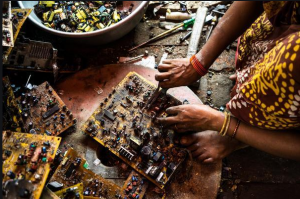
Copper wire recycled at home from e-waste (photo Bloomberg)
This logic of exploitation is not based in the application of these technologies and ownership of these technologies. Rather, if we continue to program the Facebook with PHP, Python, Erlang and D, if the databases will be continued to be based on abstraction and collection of data deposited in SQL (Sequential Query Language), Oracle and other relational database management systems, if artificial intelligence will continue to run on NVIDIA based systems, Deep Learning in the translation systems such as DeepL on BRNN (Bidirectional Recurrent Neural Networks), till the time internet works on the basis of propagation of laser signals in optical fibers and telecommunication on satelites—Facebook as a surveillance system, its deep complicitness with capitalistic structures, its modulation and manipulation of desire and collectivity will not change.
Only the ruling elite class will continue to morph itself into seemingly larger forms of collectivity yet denigrating a certain population of the world under the mechanism of equal opportunity exploitation in response to equal opportunity domination by the rest. In the words of Ursula K. Le Guin, there is always a child in the broom closet unless you walk away from Omelas. In my village in Rajasthan, there is a saying: „curses given by dying people stick a long way onto murderers and keep coming to fruition for centuries in their clans.“ Thus repercussions of colonialism and modernity are still palpable. And the privileges gained by way of the ‚accursed share‘ (Georges Bataille) must be spent before any ideas of collectivizing Facebook, Instagram, Tiktok, Zoom, Jitsy, Skype or electric dreams of socialist AI and Communist Virtual Reality can come alive.
The other end that I am writing from is often ‚initially excluded‘ in any of such movements:
1) Necessity to respond immediately to a moment of crisis. There are several factors to be considered—one, there is opportunity to do so now more than ever. Hence it is important to seize the opportunity. Second, this isn’t time for debate but for action. Third, we must act now before it is too late.
2) Diversity will anyways be included in the discussion after the first phase, i.e. in the second, third or fourth phase. Then we might even celebrate inclusion of diversity. Come back in the second, third or fourth phase, please. Come back when you are called for.
3) We should start in an ‚economy of small gestures’—once we can collectivize Facebook and the likes we can attend to questions of black workers and then we can even include indigenous voices and then the movement will be a real ‚International‘. It is important to highlight the class nature of further bifurcation in the black and indigenous communities in terms of who goes to ivy schools and comments on Facebook on racism in contemporary art events in London and who pays the cost by losing life by slow poisoning in Bauxite mine in Ghana. The mines are exploited and emptied. And then there is a lacuna—left as a poisonous gift of modernity. Empty debris next to a village. Next to mine.
What is Facebook made of? We could divide this in many layers but I propose the following three, drawing on computer science and networking:
- Application Layer
- Data Layer
- Infrastructure Layer
I will start with layer three, infrastructure.
The other end is that end where there are mines from which every inch of silica is used in making semiconductors, rare earth minerals necessary for capacitors and for every bit of data storage. What is a capacitor? Inside a capacitor, two conductor wires are separated by a set of insulators (What are these conductors and insulators made from and from where are they extracted?). This tiny thing is the foundation of every digital implementation and all discussion in contemporary art about digital—the binary form of data storage – all ones and zeros are manifested materially in this minuscule demon. Micro, as we have long known, is more destructive than macro. The term Bits which we use as a unit of storage in MB(Megabytes—each byte is made of 8 bits), GB (Gigabytes) and TB (Terabytes) is short for the phrase Binary Digits. Each bit is a single binary value: one or zero. Computers generally represent a one as a positive voltage (5 volts or 3.3 volts are common values), and a zero as 0 volts in these capacitors. You can see many of them if you zoom into the above picture of women picking e-waste.
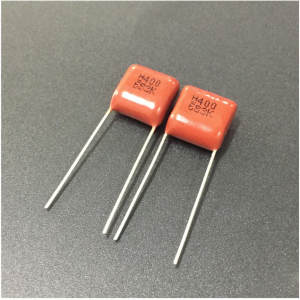
During my education at Rajasthan University in Electronics and Communication Engineering, we had both theory and practical courses of semiconductor technologies and electronic circuits. In the labs, lines of zinc, copper, aluminium and various conductor materials were put on a circuit board. Then we added capacitors and semiconductors on the circuit board identifying them with their codes and names written in miniscule print in variously colored lines. The circuit board was material caricaturing of the circuit diagrams in our notes. The lab assistant will often get annoyed at the amount of semiconductors we destroyed and how many times she had to give us replacements. The cost of them was high and sometimes she would just take matters in her hand – and show us how to do it instead of letting us experiment.
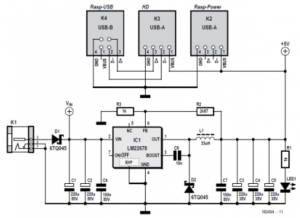
Power supply for Raspberry-Pi + Hard disk
In the above hard disk circuit diagram, c1-c8 are capacitors, D1 and D2 are diodes, and there is LED1 that we see at the bottom-right which is a Light Emitting Diode. All of these are made of minerals extracted from earth in the mines and processed through a specific process. In electronics engineering, this is called semiconductor processing and manufacturing. Have you ever wondered why silicon valley was called ’silicon‘ ?
Apart from electricity (whose immense expenditure in technologies such as blockchain and large scale data centers would require a seperate long writing) this is the minimum basic circuit necessary for a unit of storage. Many of these units of storage are used to store the data on Facebook. Once we collectivize Facebook, will our data be still stored in hard disk or in a data center?
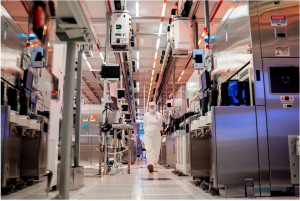
This worker wearing a PPE kit is not a corona frontline worker but this is a photograph from a semiconductor fabrication plant in Taiwan. This negative assertion is more to identify common ground and solidarities between these workers then to identify differences. Needless to say she is as much at risk to be exposed to toxic chemicals produced during manufacturing as every medical staff now. „At first glance, the semiconductor industry looks sterile. Between the clean rooms and personal protective equipment (PPE) such as gloves, gowns and respirators, conditions at chip-making plants have been described as cleaner than the average hospital…“ (Megan Ray Nichols at EHS today)
If you want to see the magic of AI programmers in Silicon Valley coming together with mining there are many examples but here is one:
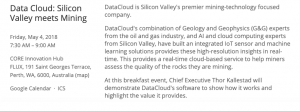
A typical NVIDIA Artificially Intelligent kit contains many of the semiconductor chips. Though at the bottom of the semiconductor manufacturing list(which is mostly defined by consumer goods such as personal computers), NVIDIA is the basis of 90 percent of AI developments.
Here is a list and market share of semiconductor manufacturers.
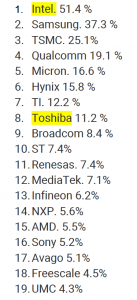
From the presentation of the NVIDIA® V100 Tensor Core data center GPU (graphics processing unit) on the brand’s website:
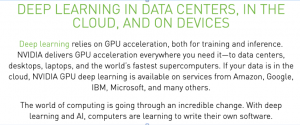

Not to mention that the very architecture of the internet is based on optical fiber. Their manufacturing technologies, distribution, and control can be identified in the same way.
„Fibre-optic Link Around the Globe (FLAG) is a 28,000-kilometre-long (17,398 mi; 15,119 nmi) fibre optic mostly-submarine communications cable that connects the United Kingdom, Japan, India, and many places in between. The cable is operated by Global Cloud Xchange.[1] The system runs from the eastern coast of North America to Japan. Its Europe-Asia segment was the fourth longest cable in the world.“
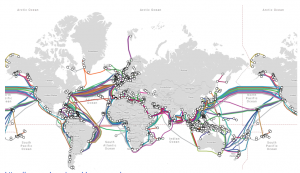
https://www.submarinecablemap.com/
Lines have been multiplied manifold in the submarine cables (the map above) from the triangular trade (the map below). What new forms of race and slavery are being produced? To address this question, we must look inside a computer program – where a variable is declared as X. string X = „being“; Y=X; X that can be stripped from a personhood to an infinitely transferrable pure value.
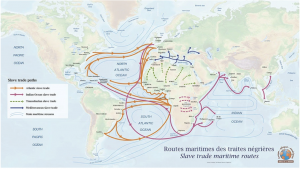
https://africandiaspora.wisc.edu/
„For what emerges at the very inception of Du Bois’s discourse and remains afoot throughout his entire itinerary is his conception of the necessity that in order to think the possibility of something like an African American subject one must be able to think not only the actual social practices that give our historical modernity its specific character, for example, the operation of practices under the sign of race, but the most radical infrastructural possibility of identity and identification“ (Nahum Dimitry Chandler, X—The Problem of the Negro as a Problem for Thought).
Then rather no points for guessing who owns and manipulates the technology of these cables.
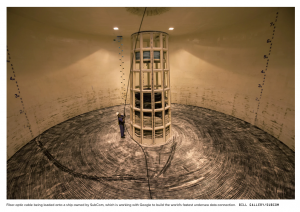
https://www.wired.com/story/google-cramming-more-data-new-atlantic-cable/
Can the Internet which started as a military experiment be removed from its inherently violent nature? Only one word will stop the buck – Infrastructure. Baudrillardian critique of the pure economy of sign applies here to using Facebook as a sign.
„A final conceptual error is the widespread tendency to confuse the network with one or more of the applications that people use. Thus, for example, many users think that the World Wide Web is ‘the Internet’. Others make the same mistake in respect of Facebook (see e.g. Moo 2016). But the Web and Facebook are just particular examples of data-enabled services that run on the infrastructure that constitutes the Internet, and mistaking them for the network is analogous to thinking that intercity trains, say, define the railway system.“ (John Naughton, „The Evolution of the Internet: from Military Experiment to General Purpose Technology,“ Journal of Cyber Policy 1/1 [2016])
24 kilometers away from our college, on the way to my village – there was a place marked for mining by Vedanta group for mining of Zinc. During those days, the panthers from the mountain hills of Aravali had started coming back to nearby villages. The Vedanta group started an education program to support villagers and give them education along with health, woman empowerment and skill development. Corporate Social Responsibility (CSR) is both a self-delusional comic act and a schism-machine (for Vedanta’s statement on its CSR policy see here).
After the university for my first job as a computer programmer, I was selected by Infosys, an Indian IT giant running the world’s largest residential training center in Mysore next to Bangalore. We were recovering from the subprime crisis in 2009 and were happy to finally receive our joinings after a long wait of a year post graduation in 2008. We weren’t afraid of going to Bangalore 1800 kilometers away from our villages and small towns in Rajasthan. None of us thought that there will be a day when one will need to return home on foot. One day when there will be no transport.
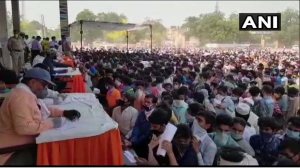
Registration queue in Uttar Pradesh in May 2020 for migrant workers applying for transport to return home during Covid-19.
Collectivize the internet, Collectivize technology. Learn techne not from Heiddeger but from indigenous people. And no aesthetical symbolic fuzz under the shade of contemporary art—only structural change will do the demand.
There used to be a messenger in my village from the kins of ‚pathik‘ (travellers), who used to take ‚pati’—the message. He used to go from one town to another and collect some grain in return to delivering a message. He died in poverty when I was a child. And his grandson who studied with me in the school works in a textile factory in nearby town. The textile is made of cotton— because….